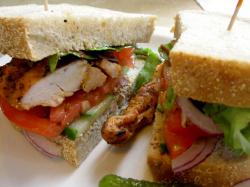Consumer Reports: Chickens Tested Harbor Bacteria
December 1, 2009 | 4 min to read

YONKERS, N.Y., Nov. 30 /PRNewswire-USNewswire/ — Consumer Reports’ latest test of fresh, whole broilers bought in 22 states reveals that two-thirds of birds tested harbored salmonella and/or campylobacter, the leading bacterial causes of food-borne disease. The story appears in the January 2010 issue of Consumer Reports and is also available free online at www.ConsumerReports.org.
Consumer Reports has been measuring contamination in store-bought chickens since 1998. The recent test shows a modest improvement since January 2007, when the magazine found these pathogens in 8 of 10 broilers, but the numbers are still far too high. The findings suggest that most companies’ safeguards are inadequate. Consumer Reports also found that most disease-causing bacteria sampled from the contaminated chicken were resistant to at least one antibiotic, potentially making any resulting illness more difficult to treat.
“Consumers still need to be very careful in handling chicken, which is routinely contaminated with disease-causing bacteria,” said Dr. Urvashi Rangan, Director of Technical Policy at Consumers Union, nonprofit publisher of Consumer Reports. “Our tests show that campylobacter is widespread in chicken, even in brands that control for salmonella. While one name brand, Perdue, and most air-chilled chickens, were less contaminated than others, this is still a very dirty industry that needs better practices and tighter government oversight.”
For its latest analysis, Consumer Reports had an outside lab test 382 chickens bought last spring from more than 100 supermarkets, gourmet- and natural-food stores, and mass merchandisers in 22 states. Among the findings:
Campylobacter was in 62 percent of the chickens, salmonella was in 14 percent, and both bacteria were in 9 percent. Only 34 percent of the birds were clear of both pathogens. That’s double the percentage of clean birds Consumer Reports found in its 2007 report but far less than the 51 percent in the 2003 report.
Among the cleanest overall were organic “air-chilled” broilers (a process in which carcasses are refrigerated and may be misted, rather than dunked in cold chlorinated water). About 60 percent were free of the two pathogens.
Perdue was found to be the cleanest of the brand-name chicken: 56 percent were free of both pathogens. This is the first time since Consumer Reports began testing chicken that one major brand has fared significantly better than others across the board.
Tyson and Foster Farms chickens were found to be the most contaminated; less than 20 percent were free of either pathogens.
Store-brand organic chickens had no salmonella at all, but only 43 percent of those birds were also free of campylobacter.
Among all brands and types of broilers tested, 68 percent of the salmonella and 60 percent of the campylobacter organisms analyzed showed resistance to one ore more antibiotics. All of the antibiotics were effective against 32 percent of salmonella samples and 40 percent of the campylobacter samples, as compared to just 16 and 33 percent in 2007
Although Perdue chickens were cleaner than other big brands in our tests, and most “air-chilled” organic birds were especially clean, Consumer Reports’ tests are a snapshot in time and no type has been consistently low enough in pathogens to recommend over all others. Buying cleaner chicken may improve consumers’ odds if they fail to prepare chicken carefully.
Each year, salmonella and campylobacter from chicken and other food sources infect at least 3.4 million Americans, send 25,500 to hospitals, and kill about 500, according to estimates by the national Centers for Disease Control and Prevention. While both salmonella and campylobacter are known to cause intestinal distress, campylobacter can lead to meningitis, arthritis, and Guillain-Barre syndrome, a severe neurological condition.
The U.S. Department of Agriculture (USDA) requires Hazard Analysis and Critical Control Point (HACCP) a consumer’s primary protection against chicken contamination. HACCP requires companies to identify potential points of contamination and take measures to eliminate them. The USDA has a standard that requires chicken producers to test for salmonella but it has yet to set a standard for campylobacter.
Consumers Union has long called for the USDA to set limits on both the percentage of chicken samples that can be contaminated with campylobacter and the levels of it that they can contain. The USDA has said that a risk assessment for campylobacter and draft performance standards would be ready by the year’s end. It could take months to a year or more, however, for a proposed standard to become a final regulation and take effect.
“USDA has been pondering new standards to cut the prevalence of bacteria in chicken for more than 5 years but has yet to act,” said Jean Halloran, Director of Food Policy Initiatives at Consumers Union. “Consumers shouldn’t have to play roulette with poultry; the USDA must make chicken less risky to eat.”
Until chicken becomes cleaner, consumers’ best line of defense involves following these procedures in stores and kitchens:
Place chicken in a plastic bag like those in the produce department to keep juices from leaking.
Choose chicken that is well wrapped and at the bottom of the case, where the temperature should be coolest. Buy chicken last before heading to the checkout line.
If you’ll cook the chicken within a couple of days, store it at 40 degrees F or below. Otherwise, freeze it.
Thaw frozen chicken in a refrigerator, inside its packaging and on a plate, or on a plate in a microwave oven. Never thaw it on a counter: When the inside is still frozen, the outside can warm up, providing a breeding ground for bacteria. Cook chicken thawed in a microwave oven right away.
Cook chicken to at least 165 degrees F. Even if it’s no longer pink, it can still harbor bacteria, so use a meat thermometer.
Don’t return cooked meat to the plate that held it raw.
Refrigerate or freeze leftovers within 2 hours of cooking.
Source: Consumer Reports
